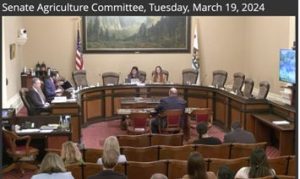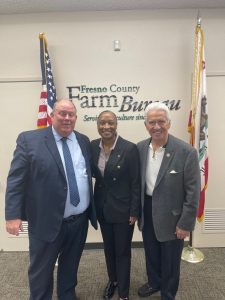The U.S. Environmental Protection Agency (EPA) is releasing an update to its draft Herbicide Strategy, which is part of the Agency’s plan to improve how it meets its Endangered Species Act (ESA) obligations. The revised draft strategy is in response to comments received on the initial draft. The draft strategy, which EPA released for public comments in July 2023, describes whether, how much, and where mitigations may be needed to protect listed species from agricultural uses of conventional herbicides. The goal is for EPA to use the strategy to proactively determine mitigations for registration and registration review actions for herbicides even before EPA, the U.S. Fish and Wildlife Service (FWS), and the National Marine Fisheries Service (NMFS) formally complete the lengthy ESA determination on whether an herbicide has effects on a listed species. EPA received extensive comments on the draft strategy, who identified concerns with specific aspects of the draft strategy and suggested revisions. EPA plans to make a number of improvements to the draft based on this feedback, with the primary changes falling into three categories.
- Making the strategy easier to understand. Many commenters noted the complexity of the strategy to determine the amount of mitigation a label requires for a particular pesticide—up to nine points of mitigation. In response, EPA is simplifying its approach, such as by using four tiers—none, low, medium, high—to describe the amount of mitigation that may be needed for each herbicide. EPA also plans to create educational materials that concisely explain the four-tier mitigation approach.
- Increasing flexibility for growers to implement the mitigation measures in the strategy. EPA expects to expand its mitigation measures, especially for specialty crops such as cherries and mint, to include new measures such as erosion barriers, reservoir tillage, and soil carbon amendments. EPA is also working with the U.S. Department of Agriculture (USDA) and other organizations to identify other measures to add to the mitigation menu that can reduce pesticide runoff and erosion.
- Reducing the amount of mitigation that may be needed when growers have already adopted voluntary practices to reduce pesticide runoff or where runoff potential is lower due to geography. For example, in areas of the country with flat lands or minimal precipitation where runoff potential is low, growers may need less or no additional measures to use agricultural herbicides, compared to what is currently in the draft strategy. EPA is also considering whether growers could meet any necessary mitigation requirements if they participate in agricultural conservation programs or work with qualified experts to design and implement mitigation measures.
EPA is also working on other changes to the Herbicide Strategy and how it is implemented. For many listed species, the maps used in the draft strategy for determining where mitigation measures would apply are often too broad, covering areas not needed to conserve the species. EPA is working with FWS and others to develop a process for refining maps for hundreds of species. Through this work, EPA expects that the land area subject to the pesticide restrictions under the final strategy could shrink for many species. The Agency expects to publish the final strategy in August 2024.


